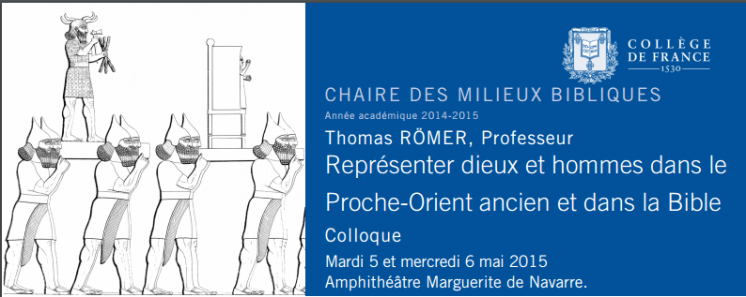Videos of Professor Thomas Römer’s 2014 and 2015 seminars at the Collège de France, entitled The Book of Exodus: Myths and Stories, are available at the Collège’s website, or for download at the links provided below (800mb+). The seminars have been overdubbed by an English translator.
His lectures cover similar material to that in his book, Moïse en version originale (Bayard, 2015).
Thomas Römer is Professor of Old Testament at the University of Lausanne (UNIL) and the Collège de France, and author of many works, including Israels Väter (1990), on the Patriarchal traditions in the Pentateuch, and The So-called Deuteronomistic History (2007), on the unity and disunity in the books of Deuteronomy to Kings.
20 FEBRUARY 2014, 2:00 pm
Introduction: Between Autocthony and Allochthony – the Invention of the Exodus
27 FEBRUARY 2014, 2:00 pm
The Oppression in Egypt
06 MARCH 2014, 2:00 pm
Pharaoh’s Midwives: The Birth of Moses, an Imported Legend
13 MARCH 2014, 2:00 pm
The Birth of Moses (continuation). Moses and the Midianites (Part I)
20 MARCH 2014, 2:00 pm
Moses and the Midianites (Part II)
27 MARCH 2014, 2:00 pm
From the Divine Name to the Attack of Moses. Preparations of the Narrative of the Plagues
03 APRIL 2014, 2:00 pm
A Competition of Magicians ? The « Plagues » of Egypt
10 APRIL 2014, 2:00 pm
The Institution of the Passover and the Passage of the Sea. The Historicization of a Myth
26 FEBRUARY 2015, 2:00 pm
Going out of Egypt: Building a Mythical Story
05 MARCH 2015, 2:00 pm
The Song of Myriam and Moses and the First Sojourn in the Desert: The “Law Before the Law”, Manna and Nostalgic Longings for Egypt (Exodus 15-17)
12 MARCH 2015, 2:00 pm
Exodus 16: The Discovery of Manna and the Sabbath
19 MARCH 2015, 2:00 pm
Massa and Meribah, the War Against Amalek and the Encounter on the Mountain of God (Exodus 17-18)
26 MARCH 2015, 2:00 pm
From the Mountain of God to Sinaï (Exodus 18-19)
02 APRIL 2015, 2:00 pm
Theophany, Covenant and Decalogue
09 APRIL 2015, 2:00 pm
The Decalogue and the Covenant Code
16 APRIL 2015, 2:00 pm
The Covenant Code, Breaking and Restoring the Covenant (Exodus 21-40)



